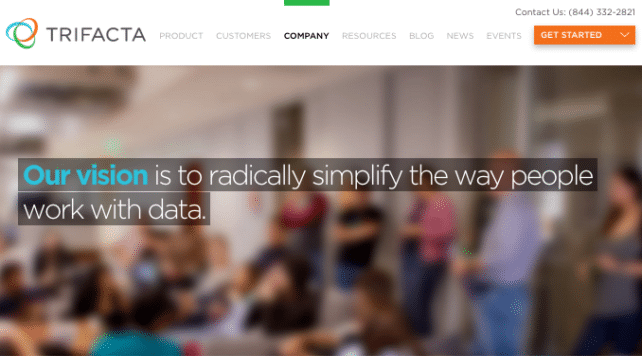Greg Satell writes one of my favorite blogs, DigitalTonto. Through his blog, Greg introduces me to new thinking and authors who are new to me. His latest post includes a prime example: John Hagel’s distinction between Stories and Narratives.
Stories versus Narratives
Stories can be very powerful in marketing. They convey an idea about a product or service in ways that are memorable, appeal to emotion and encourage retelling. Narratives, however, can be even more powerful, as they provide a context for multiple stories and for our own contributions. Here’s how John Hagel describes the differences between Stories and Narratives:
First, stories are self-contained – they have a beginning, a middle and an end. Narratives on the other hand are open-ended – the outcome is unresolved, yet to be determined. Second, stories are about me, the story-teller, or other people; they are not about you. In contrast, the resolution of narratives depends on the choice you make and the actions you take – you will determine the outcome.
| Stories | Narratives |
| Beginning, middle and an end | Open-ended |
| About the story-teller or the institution | Shaped by the participants (customers, employees) |
| Appeal to emotion | Appeal to emotion and potential (aspiration) |
| Powerful way to illustrate narrative | Versatile: many stories fit within one narrative |
There are many examples of narratives and the stories that support them, both in life and in business. Here are a few:
Christianity as narrative (man is sinful and achieves redemption through accepting a Savior). The stories or parables (The Good Samaritan, the Prodigal Son) that support the narrative.
Politics as narrative (Roosevelt’s New Deal, Reagan’s American Exceptionalism) and the stories that support them (think of Roosevelt’s fireside chats or Reagan’s City upon a Hill speech)
Southwest Airlines culture as narrative (Most loved airline, celebrate individuality, hold down costs) and the many stories about their founder and about employees that support that narrative
Apple’s Think Different as narrative, supported by many stories about Steve Jobs and about the founding of Apple
Value Propositions versus Brand Promises
As marketers, we have our own name for narrative: brand promises. Brand promises must be open-ended, shaped by participants, appeal to both emotion and potential, and encompass and be supported by stories. And while the comparison is not the same, I think it’s interesting and informative to compare brand promises to value propositions.
As a marketer, I have often asked myself and others, “What is your value proposition?” The answer often consists of three points (why three? I have no idea), supported by data. Or the value proposition consists of a statement, following a template like that described by Geoff Moore in his book Crossing the Chasm:
For ____________ (target customer)
who ____________ (statement of the need or opportunity)
our (product/service name) is ____________ (product category)
that (statement of benefit) ____________ .
There is nothing wrong with having a value proposition for internal use. It can help you define your target customer, their need, your product category and how it benefits the target customer. But brand promises, or narratives in Hagel’s language, are so much more powerful.
| Value Propositions | Brand Promises |
| Formulaic | There is no Formula |
| About Your or your product | About the customer’s aspirations |
| Appeal to logic | Appeal to emotion and potential (aspiration) |
| Can end up vague and without meaning | Unique, in the true sense of the word |
Let’s look at a two examples of marketers using value propositions versus brand promises.
Here’s IBM’s web page for their business analytics tools:
OK, I don’t know if this came off their positioning, but you can imagine that it might have. Faster, easier, smarter. Is there any product out there whose marketers don’t think is faster, easier and smarter? How boring is the phrase “transform your data into competitive advantage”. Do you see anything that is unique here that draws you in? I don’t, and I think it’s because it’s a page built off a bad (because it’s generic) value proposition.
Here’s the About page of one of the fastest growing business analytics tools in the industry, Trifacta:
If you read a little further down the page, they use language like “the key to winning with Big Data lies with people”, “Our technical vision focuses on connecting human intuition with computational power”, and “Data = Success”.
Which is more aspirational? Which is more open-ended? Which one would you be more likely to investigate? I think the answer is obvious, and it’s surely part of the reason that Tryfacta was the second fastest growing private company in the United States over the last 3 years, according to Inc. Magazine, with growth of 28,365% over that 3 year period.
This is the power of Brand Promises. Our brand promises must be narratives – open-ended; about our customers and our employees, not our products or companies; aspirational; unique; and supported by stories.






Pingback: How to get started with agile marketing | DARE
Pingback: How to get started with agile marketing | H. Money Paperstacks
Pingback: How to get started with agile marketing | 381test
Pingback: How to get started with agile marketing | Global Services Media
Pingback: How to get started with agile marketing - News Fetch
Pingback: How to get started with agile marketing | BawlBuster
Pingback: How to get started with agile marketing | Ad Pub
Pingback: How to get started with agile marketing – VentureBeat | Advertised Free
Pingback: How to get started with agile marketing - Creative Vixen
Pingback: How to get started with agile marketing - Hybrid Apps | Web Apps | Mobile Apps
Nice post Jim. I think non-marketing senior managers struggle with the idea of investing in “stories”. And for those of us close to brand strategy we’ve probably used the term too flippantly and interchangeably with “narrative” – which – as you’ve pointed out has a different structure. So thank you for the simple definitions and examples of the differences between them.